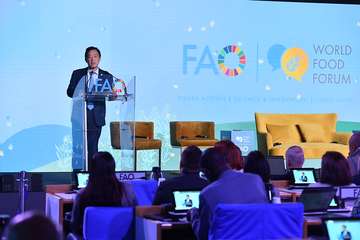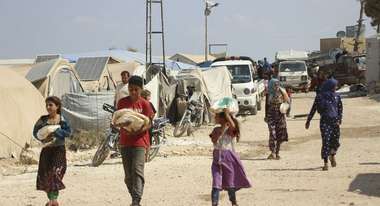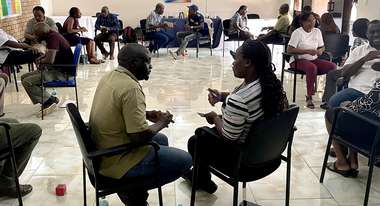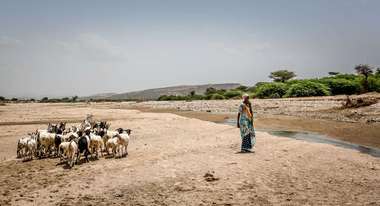Mixed Results After 20 Years of the Right to Food Guidelines
They have inspired human rights based policies and even constitutions. But conflicts, crises and a lack of political will have impeded their voluntary implementation - even within the FAO.
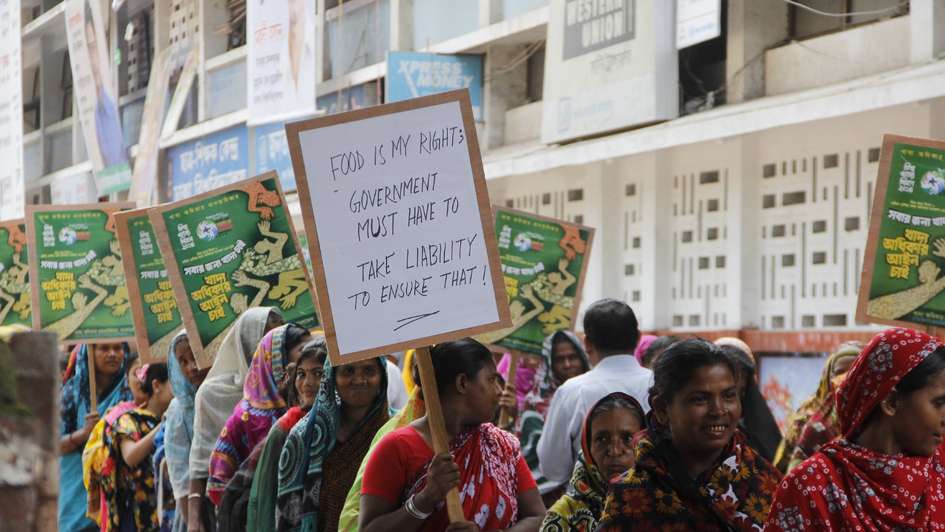
The Voluntary Guidelines on the Right to Food were adopted by the United Nations in 2004. After 20 years, it is time to take stock: what has been achieved, where are the shortcomings? What challenges remain and what factors continue to prevent the Right to Food from being realized for millions of people around the world?
Under international law, the Right to Food is enshrined in the International Covenant on Economic, Social and Cultural Rights (ICESCR). The Covenant stipulates the right to an adequate standard of living. This includes adequate food and the right to be protected from hunger (Article 11). The Right to Food is therefore an integral part of the right to life and its implementation is central to food security.
In its General Comment 12 (1999), the treaty body responsible for monitoring compliance with the ICESCR explained the Right to Food and the associated state obligations: The Right to Food is realised when all people have access at all times to adequate food or the means to obtain it.
Making the Right to Food More Concrete
In November 2004, the member states of the UN Food and Agriculture Organisation (FAO) adopted the Right to Food Guidelines. For the first time, it was possible to develop an intergovernmental document, drawn up with the active participation of civil society. It was dedicated to the implementation of one of the human rights recognised in the Covenant on Economic, Social and Cultural Rights. When the UN Committee on World Food Security (CFS) was reformed in 2009, the progressive realisation of the right to adequate food was explicitly included in the CFS's objectives. The experience of civil society participation in the negotiations on the Right to Food Guidelines was so positive that a civil society participation mechanism was institutionalised in the CFS. This was a milestone for the direct participation of rights-holders in a UN body.
What have the Right to Food Guidelines Set in Motion?
The Guidelines are based on a human rights approach which places social groups and communities - often unable to exercise their human rights - at the centre of political attention. Depending on the country context, these include farmers, landless people, indigenous peoples, nomads, fisherfolk, internally displaced persons and refugees, older people, LGBTIQA+ persons, the urban poor, the homeless and other marginalised groups. The human rights approach is based on people as rights-holders and state authorities as duty bearers. It thus places state action in a relationship of responsibility to struggles for the recognition and equal exercise of human rights.

There is no systematic monitoring of whether and how states use or implement the Guidelines; they are an instrument of so-called ‘soft law’ and their application by states is voluntary. In its monitoring of ICESCR implementation, the treaty body regularly requests information from the state under review whether the state has adopted the Guidelines. Likewise, the CFS monitoring mechanism also considers this question.
At national level, the Guidelines have contributed to an improved legal protection of the Right to Food. Currently, 46 states have explicitly or implicitly recognised the Right to Food in their constitutions.
Examples show that the Guidelines (as well as other mandatory instruments such as the ICESCR) support human rights-based policies and programmes:
Brazil: Lula da Silva's first government succeeded in greatly reducing hunger and malnutrition with a human rights-based zero hunger programme and a participatory advisory and coordination mechanism in the form of the National Food Security Council (CONSEA). After the Bolsonaro government ended this policy and dissolved CONSEA, food insecurity rose massively once again.
India: Following the Supreme Court's recognition of the Right to Food as part of the fundamental right to a life in dignity, parliament passed the National Food Security Act in 2013. This provided important support to several hundred million people, particularly during the Covid-19 pandemic.
Germany: In 2023, the German Bundestag decided to convene a citizens' council to advise on the topic of “Food in transition: between a private matter and state responsibilities”. The council presented its findings in February 2024. Adoption and implementation of its recommendations is now the responsibility of the relevant committees of the German Bundestag. A large number of food councils have been established at local level to drive forward the transformation of food systems. This is also intended to promote the democratisation of the political discourse on food and nutrition.
The Right to Food Guidelines have encouraged the development of further normative instruments in the CFS and other UN forums that are implicitly or explicitly based on the Right to Food and contain recommendations for action in various sectors that are central to food security (1). States thus have a broad orientation for implementing their human rights obligations with regard to the Right to Food; rights-holders also refer to these instruments in the context of their struggles for the recognition of rights and the transformation of food systems (2).
What Prevents Hunger from being Overcome
The United Nations estimates that around 735 million people were affected by hunger in 2022 - an increase of 122 million people compared to before the COVID-19 pandemic (3). Although sufficient food is produced worldwide, many people continue to live in food insecurity. The people most affected are those who do not have stable and secure access to productive resources such as land and seeds, or - if they live in cities - cannot earn a sufficient income from work or trade. Many governments still do not give rural regions political priority: 75 per cent of the hungry and undernourished live in rural areas.
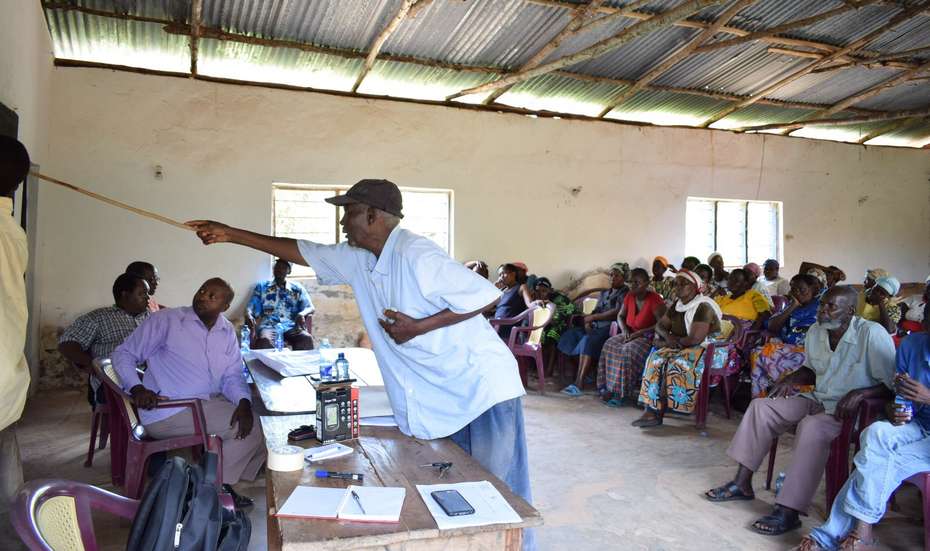
Armed conflict remains a major driver of hunger: in March 2024, the World Food Programme and other UN institutions estimated that around 1.1 million people, half the population of the Gaza Strip, are at risk of hunger. In addition, the entire population of Gaza (2.2 million people) is severely affected by acute food insecurity. In Sudan, 17.7 million people are said to be severely affected by acute food insecurity. In Yemen, 4.5 million people in government-controlled areas alone are said to be affected by high levels of acute food insecurity. The destruction of agricultural land and infrastructure, the partial or complete collapse of food production and trade, blockades of humanitarian aid and the use of hunger as a weapon are leading to massive violations of the Right to Food. The question of how the Right to Food can be more effectively protected and enforced in armed conflict therefore remains one of the most pressing issues of our time.
The so-called triple planetary crisis, i.e. climate change, biodiversity loss and desertification, is another - unresolved and urgent - problem that was not yet on the agenda to the same extent when the Guidelines were drawn up 20 years ago: How can states and the international community transform food systems so that all people can feed themselves adequately and at the same time take effective action against the triple planetary crisis?
Due to the growing inequality within and between countries, a purely market-driven increase in production to realise the Right to Food has reached its limits; injustice in distribution cannot be solved with more production. This is particularly evident in many countries of the Global North. As a result of growing inequality that is not adequately addressed by social policy measures, malnutrition and obesity are increasing simultaneously, as a comparative study published by the renowned medical journal Lancet in February 2024 showed. In Germany, this issue is virulent under the heading of poverty-related malnutrition and is being discussed primarily in the context of the standard needs rate of the citizen's benefit (4).
In addition, other problems hamper the realisation of the Right to Food, including systemic discrimination against women or minorities; concentration of land and natural resources in the hands of a few; concentration of market power in food systems; foreign debt and the dependence of many countries on food imports.
Policy Solutions Must be Geared Towards Human Rights
These issues require policy solutions that are clearly focussed on human rights and link the respective local, national and international levels. Last but not least, participatory decision-making processes must be strengthened and thus contribute to the democratisation of food-related policies.
The longstanding divergence between the words and actions of key players such as the FAO and the World Trade Organisation (WTO) must be overcome. While the FAO itself has adopted the Guidelines, it does not attach any relevant importance to the Right to Food in its 2022-2031 strategic framework. Already in 2018, Carolin Anthes observed a decline in support for the Right to Food within the FAO (5). For World Food Day in October 2024, the FAO has chosen the motto ‘Right to Foods’. This represents a departure from the language established in international law and political discourse on the Right to Food. It also distorts its content by reducing the Right to Food to a Right to Foodstuffs.
Regarding the WTO, it should be noted that negotiations there have made no progress, meaning that the effects of price volatility in trade in agricultural products - be it grain or fertilisers - are shifted to producers and consumers. As the UN Special Rapporteur on the Right to Food succinctly summarised in 2022, the WTO is not guided by a coherent international food policy, nor does the FAO deal with trade policy issues (6).
Human rights must often be achieved by people facing resistance. This also applies to the Right to Food and everything associated with it for a dignified life. In recent years, many social movements in countries around the world have courageously shown how this can be achieved. The soft law instruments described above and the state obligations under Article 11 of the ICESCR are important advocacy tools in this regard.



Sarah Brand and Martin Wolpold-Bosien are researchers at the German Institute for Human Rights and work on the Right to Food, Anna Würth heads the institute’s international department.
Footnotes
1) Examples from the CFS include the Voluntary Guidelines on the Responsible Governance of Tenure of Land, Fisheries and Forests (VGGT) and other CFS instruments on water, social protection, gender equality, conflict and protracted crises.
2) One example is the Declaration on the Rights of Smallholder Farmers and Other People Working in Rural Areas (UNDROP). General Comment No. 26 (2022) on land of the UN Social Covenant Committee should be emphasised as an authoritative interpretation of Covenant provisions.
3) FAO, IFAD, UNICEF, WFP, WHO (2023) The State of Food Security and Nutrition in the World 2023. Urbanisation, agrifood systems transformation and healthy diets across the rural-urban continuum. Rome, FAO, p. 6. A review of the impact of the COVID-19 pandemic on the Right to Food was presented by the UN Special Rapporteur on the Right to Food in 2023.
4) German Bundestag, Scientific Services (2022): Costs of a diet according to the recommendations of the DGE. WD 5 - 3000 - 143/22
5) https://blog.prif.org/2018/11/21/mainstreaming-the-human-right-to-food-within-the-fao/ https://www.researchgate.net/publication/351521074_The_rise_and_fall_of_the_New_Alliance_for_Food_Security_and_Nutrition_a_tale_of_two_discourses
6) https://www.ohchr.org/sites/default/files/2022-05/joint-statement-wto-imf-wfp.pdf
